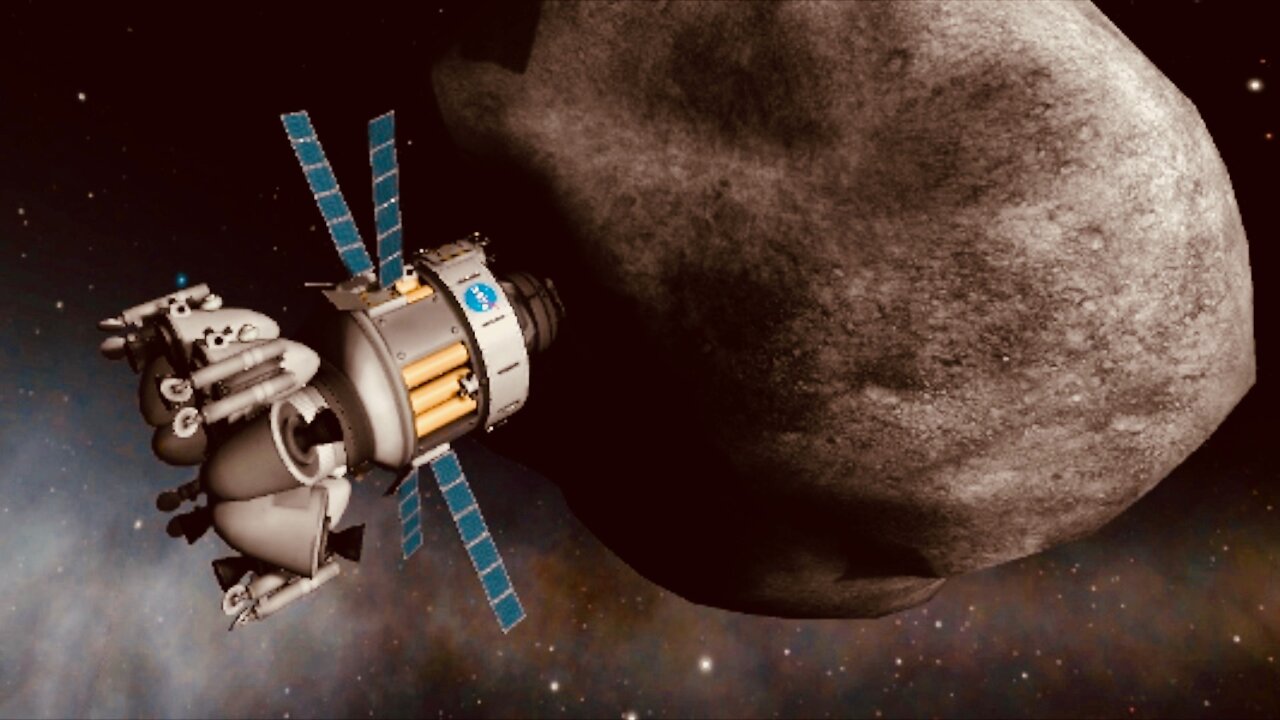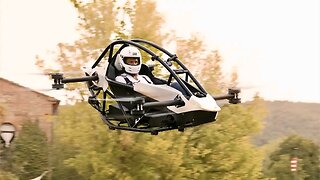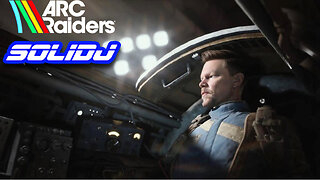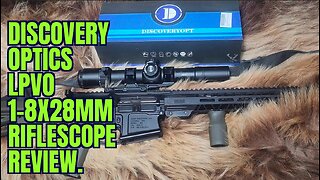Premium Only Content

NASA's Asteroid Redirect Mission - Earth Saving Robot - Great Animation
NASA is developing a first-ever robotic mission to visit a large near-Earth asteroid, collect a multi-ton boulder from its surface, and redirect it into a stable orbit around the moon. Music: Star of the Conqueror (Radio Edit) by Dhruva Aliman... https://dhruvaaliman.bandcamp.com/album/the-wolf-and-the-river - http://www.dhruvaaliman.com/ ...This concept animation opens with a rendering of the mission's spacecraft trajectory, rendezvous, and approach to asteroid 2008 EV5. Although the mission's target asteroid won't officially be selected until a year before the robotic spacecraft is launched, 2008 EV5 is used as a reference for mission planning details. The animation concludes with the notional crew operations that will take place after the asteroid boulder is placed in lunar orbit.
Once it’s there, astronauts will explore it and return with samples in the 2020s. This Asteroid Redirect Mission (ARM) is part of NASA’s plan to advance the new technologies and spaceflight experience needed for a human mission to the Martian system in the 2030s.
NASA has identified multiple candidate asteroids and continues the search for one that could be redirected to near the moon in the 2020s. Since the announcement of the Asteroid Initiative in 2013, NASA’s Near-Earth Object Observation Program has catalogued more than 1,000 new near-Earth asteroids discovered by various search teams. Of those identified so far, four could be good candidates for ARM. Scientists anticipate many more will be discovered over the next few years, and NASA will study their velocity, orbit, size and spin before deciding on the target asteroid for the ARM mission.
The Asteroid Redirect Mission is one part of NASA’s Asteroid Initiative. The initiative also includes an Asteroid Grand Challenge, designed to accelerate NASA’s efforts to locate potentially hazardous asteroids through non-traditional collaborations and partnerships. The challenge could also help identify viable candidates for ARM.
NASA plans to launch the ARM robotic spacecraft at the end of this decade. The spacecraft will capture a boulder off of a large asteroid using a robotic arm. After an asteroid mass is collected, the spacecraft will redirect it to a stable orbit around the moon called a “Distant Retrograde Orbit.” Astronauts aboard NASA's Orion spacecraft, launched from a Space Launch System (SLS) rocket, will explore the asteroid in the mid-2020s.
Asteroids are left-over materials from the solar system's formation. Astronauts will return to Earth with far more samples than have ever been available for study, which could open new scientific discoveries about the formation of our solar system and beginning of life on Earth.
The robotic mission also will demonstrate planetary defense techniques to deflect dangerous asteroids and protect Earth if needed in the future. NASA will choose an asteroid mass for capture with a size and mass that cannot harm the Earth, because it would burn up in the atmosphere. In addition to ensuring a stable orbit, redirecting the asteroid mass to a distant retrograde orbit around the moon also will ensure it will not hit Earth.
Perhaps most importantly, NASA’s Asteroid Redirect Mission will greatly advance NASA’s human path to Mars, testing the capabilities needed for a crewed mission to the Red Planet in the 2030s. For more information, read “How NASA’s Asteroid Redirect Mission Will Help Humans Reach Mars.”
Music: Star of the Conqueror by Dhruva Aliman
Amazon- https://amzn.to/2Mgr7pg
https://music.apple.com/us/artist/dhruva-aliman/363563637
https://dhruvaaliman.bandcamp.com/album/the-wolf-and-the-river
http://www.dhruvaaliman.com/
Spotify - https://open.spotify.com/artist/5XiFCr9iBKE6Cupltgnlet
#space
#Asteroid
#NASA
-
 3:33
3:33
Knowledge Land
5 months agoYour Personal Electric Aircraft Is Here - Jetson One
196 -
 19:31
19:31
Liberty Hangout
3 days agoAnti-Trumpers Repeat CNN Talking Points
176K207 -
 19:53
19:53
Clintonjaws
2 hours ago $0.77 earnedThey Lied About Charlie Kirk - MAJOR UPDATE
9022 -
 LIVE
LIVE
S0lidJ
1 hour ago🟢Live -S0lidJ - Solos Arc Raiders
88 watching -
 LIVE
LIVE
TheItalianCEO
5 hours agoSunday is for chill games
77 watching -
 10:24
10:24
AlaskanBallistics
17 hours agoDiscovery Optics 1-8x28mm LPVO Riflescope Review
1.63K -
 2:08:24
2:08:24
Jeff Ahern
3 hours ago $7.20 earnedThe Sunday Show with Jeff Ahern
13.5K6 -
 27:41
27:41
DeVory Darkins
1 day agoMarjorie Taylor Greene STUNNED after Trump pulls her endorsement
37.8K314 -

ttvglamourx
5 hours ago $0.73 earnedSUSSY SUNDAY !DISCORD
6.5K -
 2:45:29
2:45:29
slychapter3
3 hours ago🔴🏝 Using Christopher Columbus's Spy Glass🔭!! Survival: Fountain of Youth!!🔴
4.17K